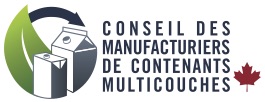It’s an old chestnut of business wisdom, but it may be truer now than ever before.
As China’s National Sword cuts deeply into many of our recycling programs it has become more important to understand the effects of news about our sector on our operating environment. How do consumers, material recycling facilities, materials buyers and the municipalities that rely on revenue from their collections respond or react to good and bad news about the state of recycling?
Good data, makes for good decisions
Data has always been the cornerstone of the best business decisions and yet, within the recycling sector, data is often delivered in annual bundles. In an “ideal” world, we would be able to access more information from more sources to get a more detailed view of the business environment we are operating within. This includes both ‘capture’ information (i.e. how much material is making it to the recycling bin) and recycling information (i.e. how much of that captured material is making it to an end-market for recycling).
Our recent plans to launch an Ontario-wide digital awareness campaign to encourage recycling of cartons brought this issue to the front of our wish list. It would be wonderful to not only know which of our ads has the best affect, in terms of views and clicks but also in real-world measures like the impact of the campaign on the volume of cartons being recovered through local programs.
Things are looking up
Some Ontario-based developments are encouraging in this sense. The recent launch of Waste Wiki, an online, open access resource that houses data, research and literature pertinent to Canada’s waste management sector, is a step in the right direction. And the Resource Productivity and Recovery Authority’s new registry, which opened July 4th for tires, is expected to feature a robust reporting function on solid waste recovery performance.
And in neighboring Quebec, all participants at an industry-wide consultation on the state of blue box recycling convened by the Minister last May, agreed on the need for more transparency about the quantities of materials collected and where they end up.
Improvements to our sector’s data collection and data sharing would provide industry organizations and other players with better insights into consumer behaviour and also generate momentum in our independent and joint efforts.
What do YOU think?
I would love to hear your thoughts and –with your permission– share them with our colleagues.


